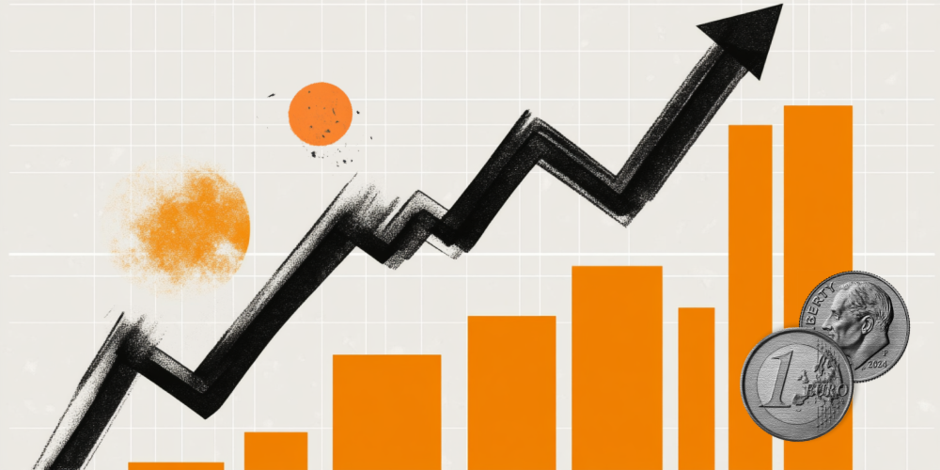EUR/USD Price Forecast: A move to 1.1000 lurks on the horizon
- EUR/USD extends the optimism to multi-month highs past 1.0950.
- The US Dollar weakens to five-month lows amid firm risk-on mood.
- The Federal Reserve is expected to keep rates unchanged on Wednesday.

EUR/USD climbed higher for a third straight session on Tuesday, breaking past 1.0950 as the US Dollar (USD) remained well on the defensive.
Indeed, the pair climbed to multi-month peaks, while the US Dollar Index (DXY) tumbled toward an area last visited in mid-October in the 103.30–103.20 band, weighed as well by diminishing US yields.
Trade tensions dent Dollar confidence
Lingering trade jitters remain front and centre, fuelled by President Trump’s unpredictable approach to tariffs. Although Canada and Mexico received a brief extension until April 2, fears of a full-blown global trade war still loom, threatening both economic growth and the Federal Reserve’s (Fed) policy outlook.
Tariffs could drive inflation higher—potentially forcing the Fed into a more aggressive tightening path—yet they also risk cooling economic expansion. These conflicting factors leave the Greenback’s near-term direction in question.
Flickers of hope on the Russia-Ukraine front
The Euro (EUR) also derives support from hints of progress in Russia-Ukraine peace talks, following a high-profile call between Presidents Trump and Putin.
Indeed, in a notable development on Tuesday, the Kremlin announced that Russian President V. Putin has accepted US President D. Trump’s proposal for a 30-day pause on energy infrastructure attacks between Russia and Ukraine. The agreement was reached after an extended phone conversation between the two leaders.
Central bank watch
It’s a crucial week for monetary policy, with the Fed, Bank of Japan (BoJ), and Bank of England (BoE) all expected to keep rates on hold. Each is likely to address trade concerns, especially tariffs, and how they might dampen global growth.
For its part, the Fed is set to keep rates within the 4.25%–4.50% range. At the latest event, Chair Jerome Powell pointed to strong US fundamentals, moderate inflation, and a tight labour market as justification for pausing further rate hikes. Still, the possibility of tariff-induced price pressures could complicate future Fed decisions.
Meanwhile, the European Central Bank (ECB) recently trimmed its key rates by 25 basis points and hinted at more easing if uncertainty persists. While policymakers cut Eurozone growth forecasts and nudged inflation expectations slightly higher in the short term, they still foresee inflation cooling by 2026. The idea that the ECB might step back from easing has gained traction, adding another layer of intrigue to the Euro’s outlook.
Technical picture
Immediate resistance for EUR/USD sits at the YTD high at 1.0954 (March 18). A breakout there would expose 1.0969 (23.6% Fibonacci retracement), followed by the psychologically significant 1.1000 handle.
On the downside, the 200-day Simple Moving Average (SMA) at 1.0726 offers initial support, followed by the transitory 100-day and 55-day SMAs at 1.0521 and 1.0477, respectively. Below these lie 1.0359 (February 28 low), 1.0282 (February 10 low), 1.0209 (February 3), and 1.0176 (January 13 low for 2025).
Momentum signals look moderately bullish: the Relative Strength Index (RSI) has climbed above 73, remaining in the overbought territory, while the Average Directional Index (ADX) above 31 indicates a strengthening uptrend.
EUR/USD daily chart
Short-term outlook
EUR/USD will remain sensitive to trade policy headlines, divergent central bank moves, and the Eurozone growth narrative—particularly if Germany ramps up spending. Developments in the Russia-Ukraine situation could also rapidly shift market sentiment, ensuring traders keep a close eye on both geopolitical news and economic data in the days ahead.
Premium
You have reached your limit of 3 free articles for this month.
Start your subscription and get access to all our original articles.
Author

Pablo Piovano
FXStreet
Born and bred in Argentina, Pablo has been carrying on with his passion for FX markets and trading since his first college years.


















